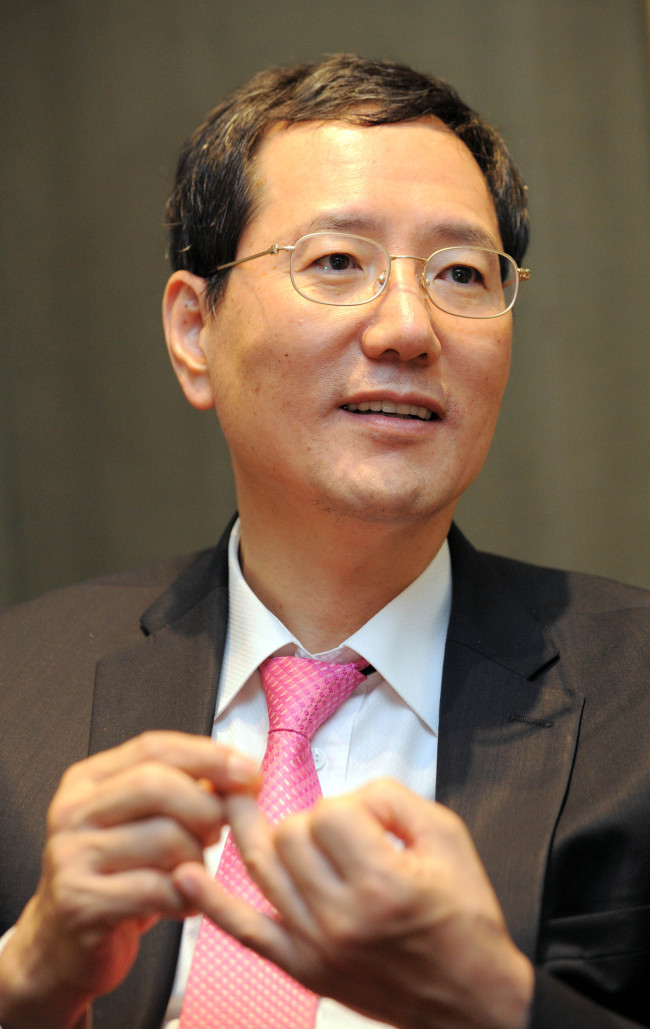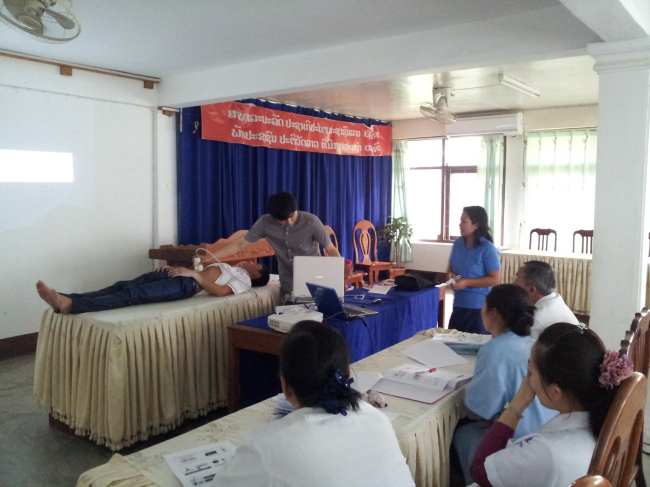[Herald Interview] ‘Developing countries big chance for medical device-makers’
By Korea HeraldPublished : Jan. 20, 2015 - 20:17
Korean medical appliance-makers should aim to export devices using “appropriate technology” to less-privileged countries rather than to the U.S. or Europe, the head of the association of Korean medical device producers said.
Appropriate health care technology generally refers to small-scale, decentralized, labor-intensive, energy-efficient, environmentally sound and locally controlled technology, as opposed to pricey new technology.
“I think people are obsessed with developing technologies that are grand and fancy, hailed as pioneers in the U.S. and the European markets, but the real blue ocean is the less-privileged countries in Asia and Africa,” said Lee Min-hwa, chairman of the Korean Digital Hospital Export Agency, in an interview with The Korea Herald.
Appropriate health care technology generally refers to small-scale, decentralized, labor-intensive, energy-efficient, environmentally sound and locally controlled technology, as opposed to pricey new technology.
“I think people are obsessed with developing technologies that are grand and fancy, hailed as pioneers in the U.S. and the European markets, but the real blue ocean is the less-privileged countries in Asia and Africa,” said Lee Min-hwa, chairman of the Korean Digital Hospital Export Agency, in an interview with The Korea Herald.

“With Korea’s overseas development assistance fund increasing every year ― this year’s amount stands at 2.3 trillion won ($2.1 billion) ― the demand for medical devices based on the appropriate health care technology will rise. We are talking about humanitarian deeds that could also be a great business opportunity.
“For these countries, you just need to trim the existing technologies and devices to make products that are affordable and easy to learn (how to use),” he said.
KOHEA, established in 2011, arranges exports of medical devices including the digital infrastructure of 80 small and mid-size companies.
It is currently pursuing 40 or more projects involving exporting digital solutions and devices to about 15 countries. The agency also provides digital health care solutions to 25 clinics in Korea for migrant workers. KOHEA hopes to arrange 5 billion won worth of deals this year.
KOHEA is now designing a road map in accordance with the United Nations’ Millennium Development Goal to improve maternal health and reduce child mortality.

The road map’s goals include providing digital solutions, selling actual medical devices and training nonprofessional medics to use the much-simpler machines.
“For instance, in African countries, a simple prenatal screening of pregnant women could reduce the risks of various problems and complications leading to infant mortality and death in labor.
“By exporting ultrasound devices which do not necessarily have all the state-of-the-art options but are instead simpler, easy to use and affordable, we believe we can offer more prenatal tests to pregnant women there. If not sonography, how about Doppler devices?” he said.
He also suggested that by digitizing charts and storage inventories, hospitals can better manage their patients and medicines.
“Providing mobile solutions is very promising, especially in less-privileged countries. While the electricity infrastructure provision rate stands at merely 30 percent in some African countries, their mobile phone usage rate is 80 percent,” he said.
Lee, who found fame in the medical industry in 1985 when he founded ultrasound machine manufacturer Medison, said he believes appropriate health care technology will become a growth engine for the Korean medical industry.
Medison was acquired by Samsung in 2010 and became the main axis of the business conglomerate’s health care vision.
“The appropriate health care technology is for 99.9 percent of the population. There is a market, and all you need to do is go there,” he said.
By Bae Ji-sook (baejisook@heraldcorp.com)
-
Articles by Korea Herald








![[KH Explains] How should Korea adjust its trade defenses against Chinese EVs?](http://res.heraldm.com/phpwas/restmb_idxmake.php?idx=644&simg=/content/image/2024/04/15/20240415050562_0.jpg&u=20240415144419)











![[Today’s K-pop] Stray Kids to return soon: report](http://res.heraldm.com/phpwas/restmb_idxmake.php?idx=642&simg=/content/image/2024/04/16/20240416050713_0.jpg&u=)